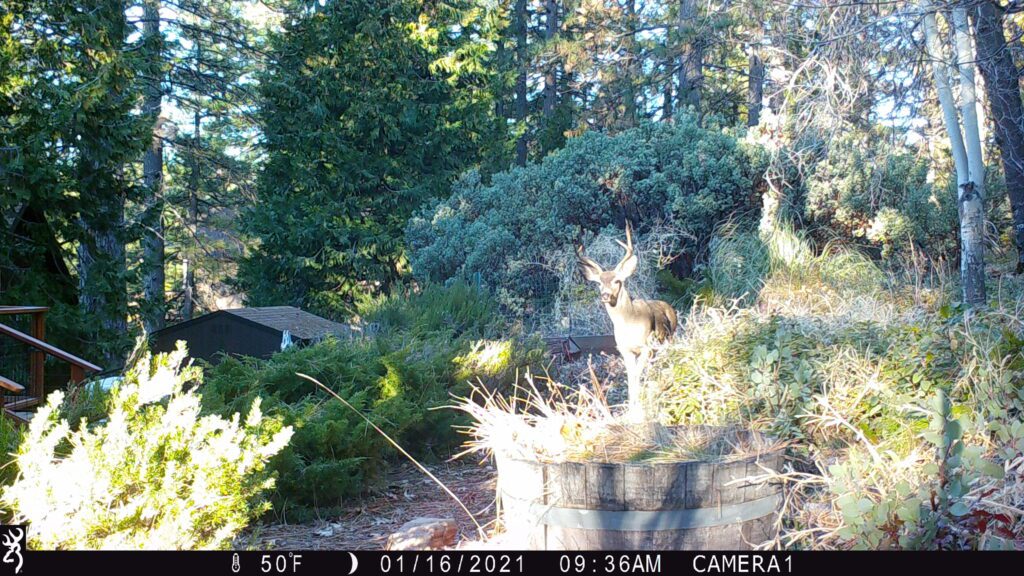Deer Migration
The other morning I heard on the news that travelers to the Sierras should expect traffic delays along Highway 4 due to deer migration. WHAT???? How exciting is that? It made me want to jump in my car and drive up there to experience the migration. The spring migration occurs during April and May, so I still have the month of May to observe.
Learning about the migration made me want to research further the deer population that I’m photographing. For example, I’ve been under the impression that the deer on my property are black-tailed, but apparently, the deer involved in the migration is primarily mule deer. So what are my deer? I learned that there are two subspecies of mule deer in California: the Colombian black-tailed deer and the California mule deer.
Attempting to positively identify my deer, I learned that the coloration of the tails of the mule deer and the black-tailed deer are different. OK, I figured that might be the case. The typical mule deer has a white tail with a black tip, while the California black-tailed deer has a black stripe running up its tail. In a pure black-tailed deer, the tail is entirely black with a black stripe that extends up the tail and along the back. To complicate things, however, these two deer species are so plentiful they readily interbreed.
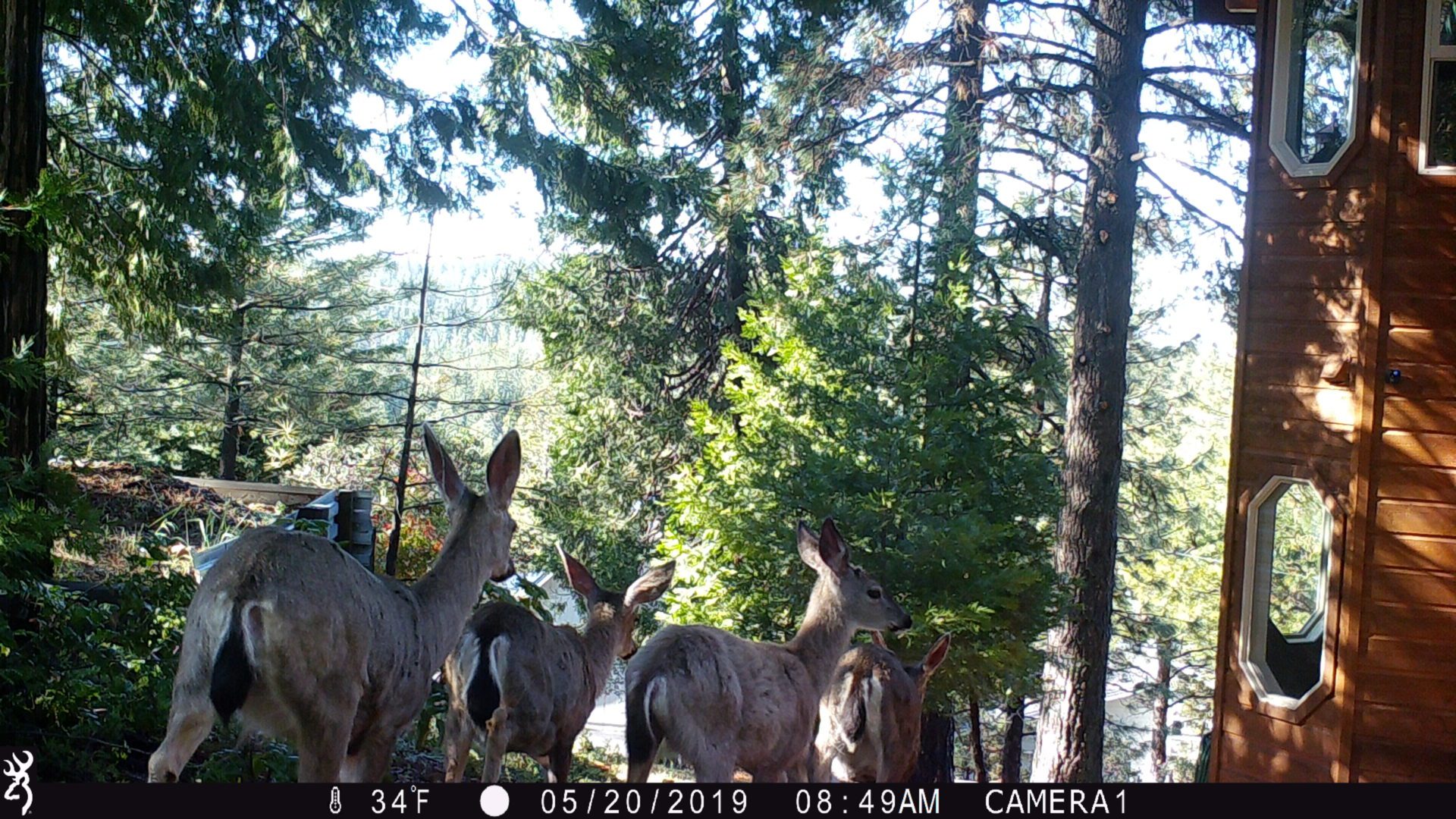
Here are a couple more pictures of the cute tails of my deer.
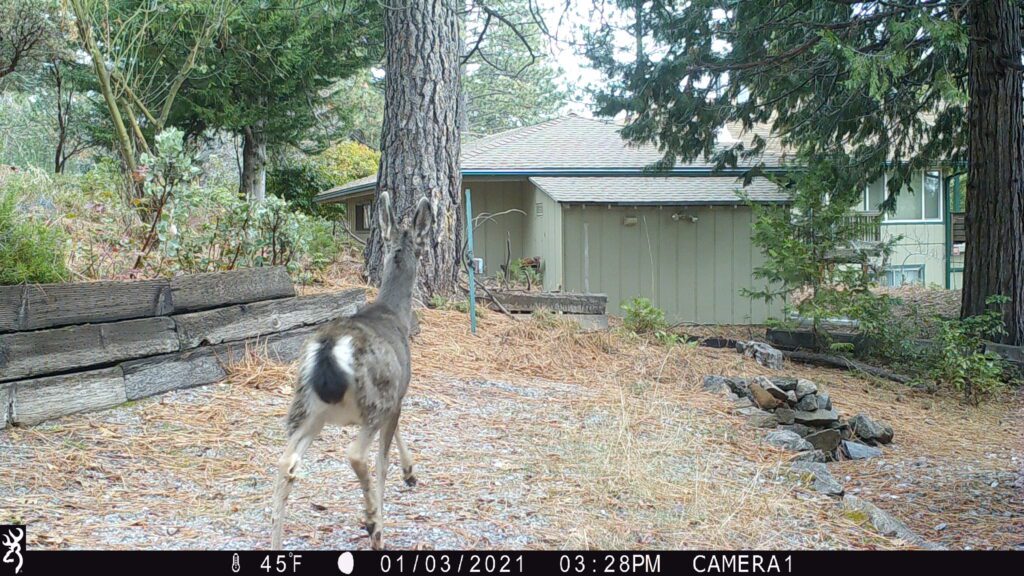
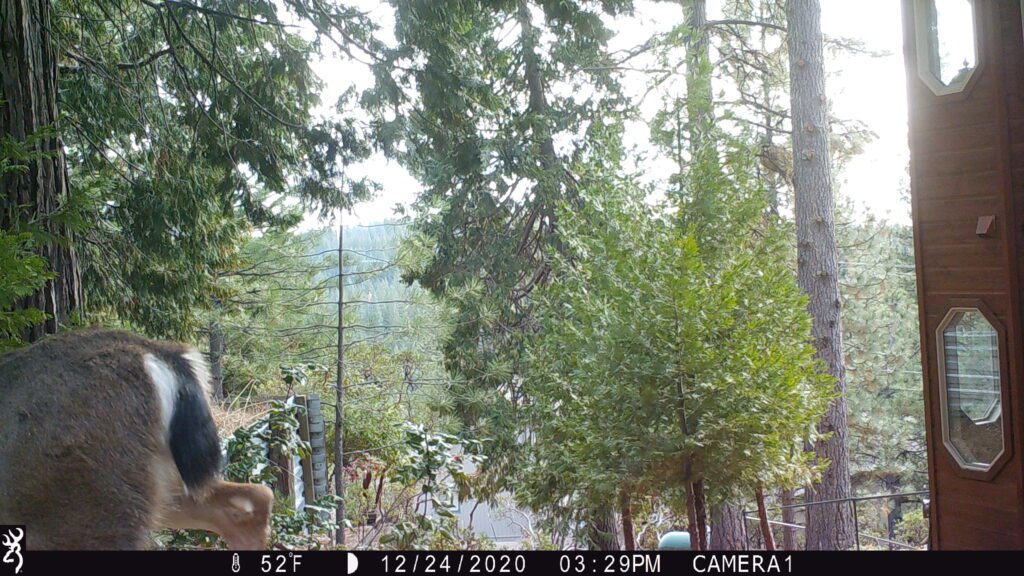
It would be so exciting if the deer migration flowed through our property on the existing game trails. Unfortunately, I don’t think there is a chance, but I’ll be observing closer than ever before.
Game Trails
Learning about the migration certainly rekindled my interest in the game trails in our area. I have so much more to learn, but I think I can safely say that the game trails are primarily a means for animals to get from one place to the other—for example, a game trail to a food source or a game trail to a water source. The large herbivores, the deer, make ours. The deer are large, heavy animals that are walking on hard hooves. The other animals also follow these trails, but even the predator animals, such as bears with their soft paws, don’t leave the clear tracks creating a game trail. Instead, the smaller animals and the predators use the game trail for convenience because it’s there.
The following series of field camera (Field Camera #7) photographs focus on the game trail behind the house.
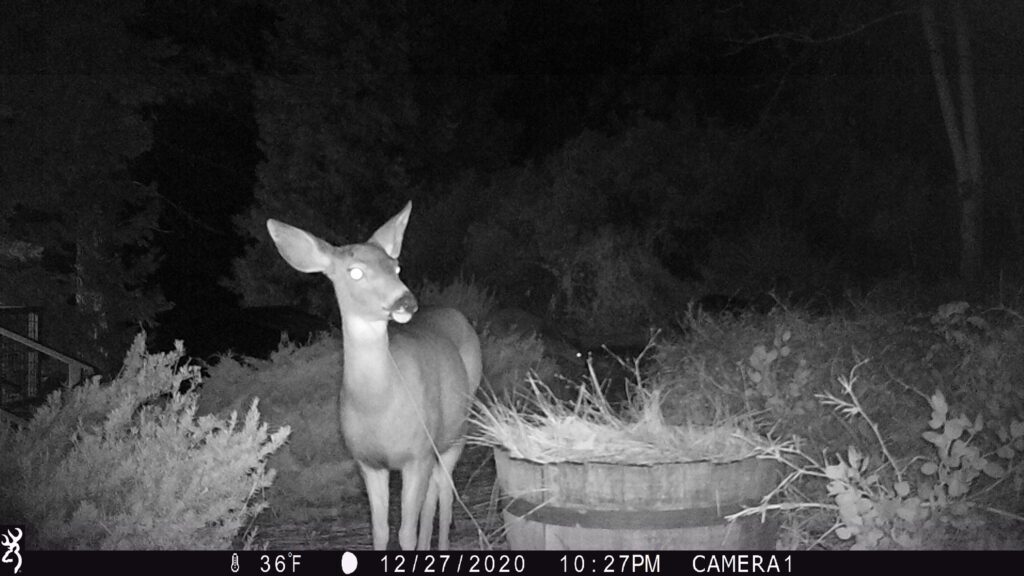
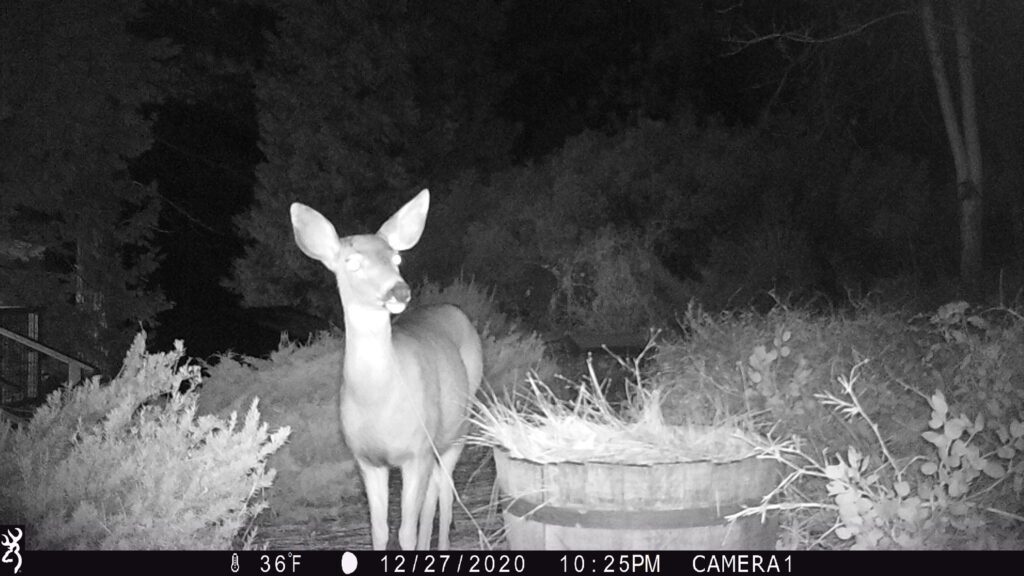
The game trail behind our house is, for the most part, level, and the deer move through this area at varying speeds.

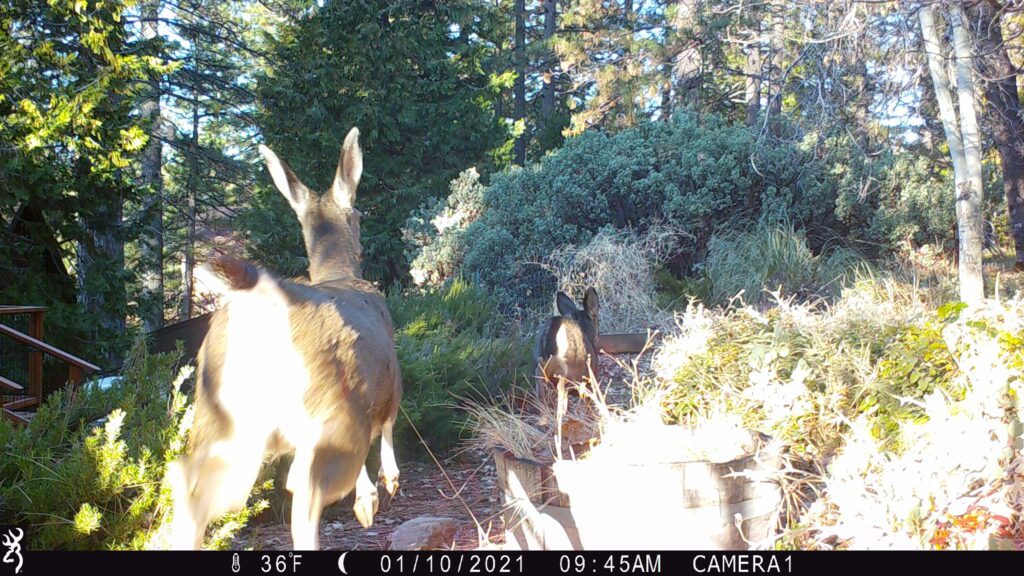


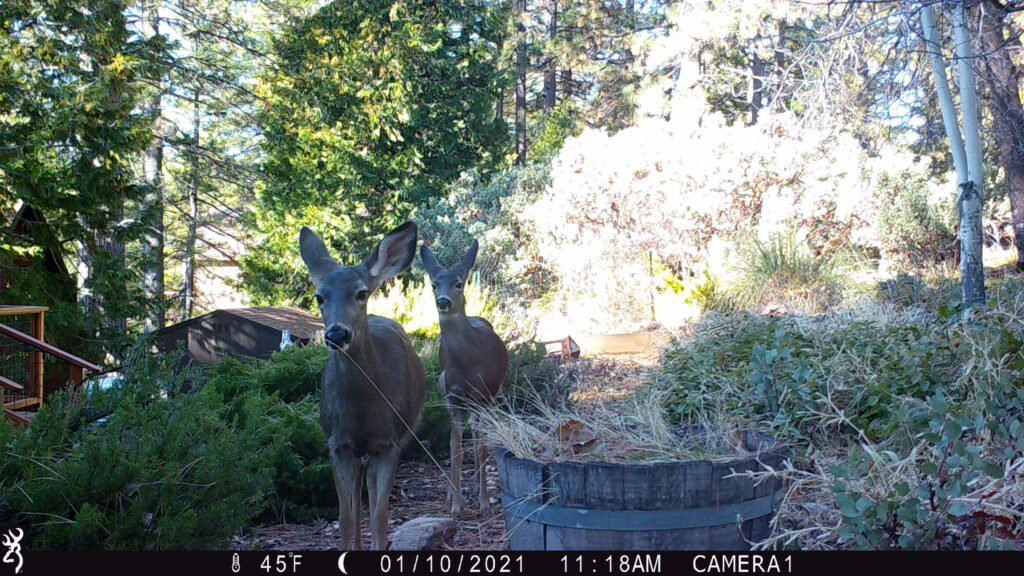

I have photos of the deer running up the incline but never running down. I wonder if they are extra cautious stepping down and more confident striding up?
The following photos are from the Field Camera #6.

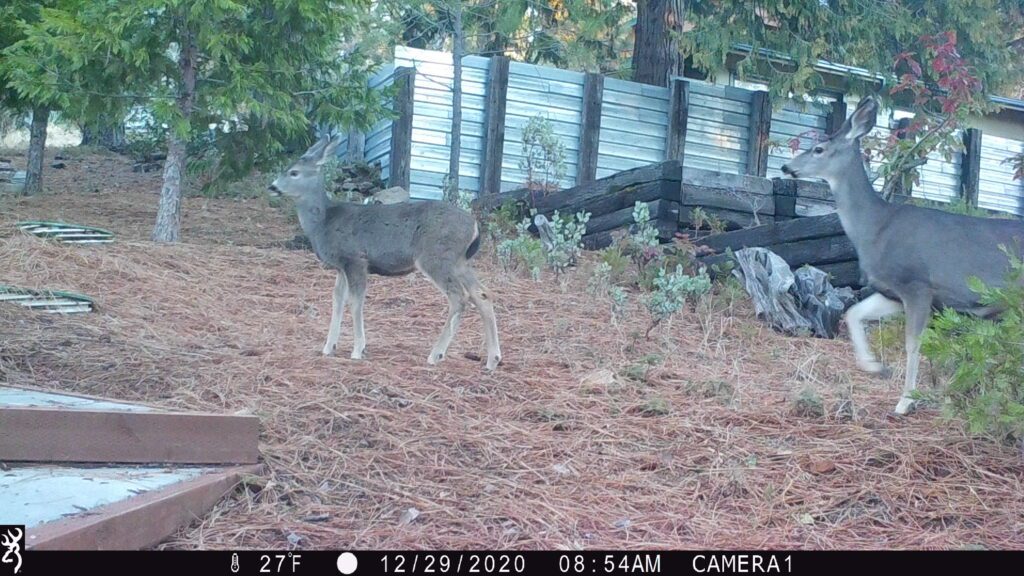


The following photo is from Field Camera #3.
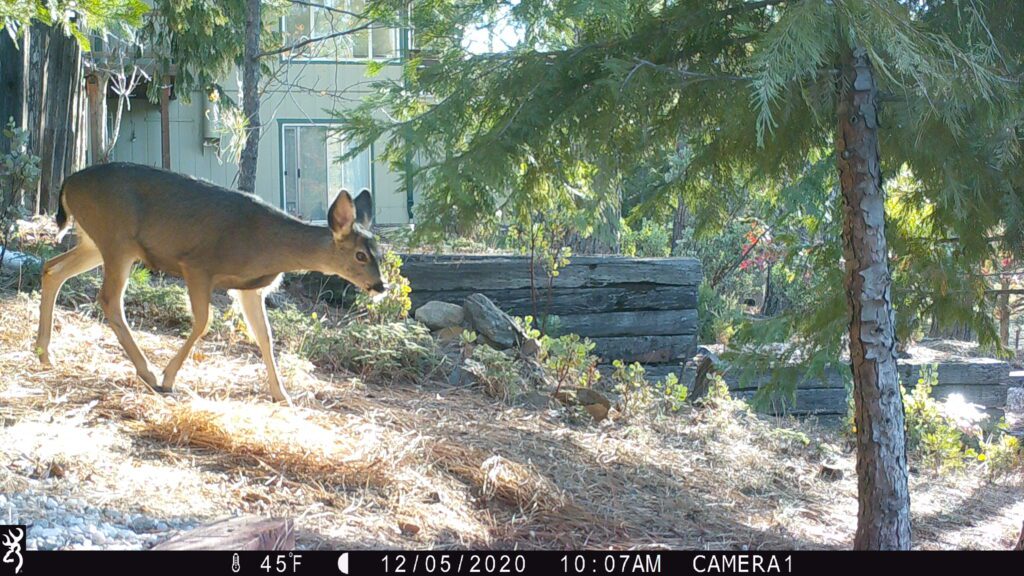
Deer are sturdy animals, but they always bring to my mind visions of softness, compassion, and peace. I am so lucky to be able to observe them traveling my game trails.

